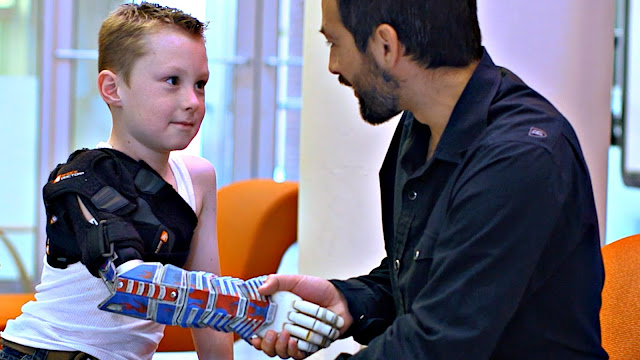Artificial Limb Prosthesis Surgery India: Beginning of Active Life with Attractive Price

What is Artificial Limb
Prosthesis?
Artificial limb prosthesis is known as an attachment or
addition that is an artificial device used for replacing the missing body part.
These are custom made and invariably help patients by restoring their physical
ability which may have been lost during trauma, accident, disease or due to any
congenital conditions.
Who are the candidate for
Treatment?
People who have the misfortune to lose their arms or legs
due to injury, birth defects or disease are the candidates needing this
treatment. An artificial limb helps the amputees to get back their normal
functioning to a certain degree. Sometimes cancer, cardiovascular disease and
infection brought by disorders such as diabetes lead to cause amputation and
hence these people may need the treatment. Serious calamities such as recent
earthquake can seriously injure thousands of people who will need artificial
limbs as their wounds begin to heal.
Who Needs What?
1) Artificial
joint prosthesis: Needed
when the cartilage at joints wears down and lead to severe pain and decreased
movement. Prosthesis is needed to replace the damaged joints.
2) Artificial
Upper Limb Prosthesis: Used
to replace the missing limb with body powered arm prosthesis that is attached
to the body with a cable and a harness. It can be:
a. Transradial
or below the elbow: When
the forearm needs prosthesis
b. Transhumeral
or above the elbow: A
complete arm needs prosthesis
c.
Myoelectric
prosthesis: Type of artificial arm
controlled by electric signals in the brain
3) Artificial
Lower Limb Prosthesis: Used
to replace the missing leg. They are two types:
a. Trans-tibial: Used to replace missing parts below the knee
b. Trans-femoralare: Used to replace missing parts above the knee. It
includes an artificial knee joint and attach to the thigh.
4) Cosmetic
Prosthesis: Improve a person’s
appearance after the loss of certain body part such as silicone hands,
artificial eyes, fingers, feet, toes and breasts.
5) Robotic
Prosthesis: Works in conjunction
with human nerves and sensors that biosensors detect signals from one’s nervous
or muscular system.
What’s the Future?
The future holds truly bionic human beings with part flesh
and part machine. As per experts, 50% of the human body is currently
replaceable with the artificial implants and advanced prosthetics. Mechanical
organs such as the lungs, heart, spleen, pancreas and kidneys either exist
currently or are in the advanced stages of development. Like most electronic
implants as hearing aids, pacemakers already control, restores and enhance the
normal body functions.
In future, the prosthesis will be able to do far more than
replacing the body parts lost due to disease, injury or age as they will extend
the boundaries of what the humans can do. These technologies not only repair us
but also make us better than well.
Affordable Price of Artificial
Limb Prosthesis Surgery India
India has been recognized for offering the affordable price
of artificial limb prosthesis surgery. This is the reasons why thousands of
global patients from across the world fly down to get their affordable price of
artificial limb prosthesis surgery India. Further the costs of this surgery in
the highly developed countries are heavy on the budget of the patients. Doctors
and surgeons in India are highly qualified, experienced and highly skilled. The
limb prosthesis centers located across the country have the most advanced
medical treatments with latest equipments.
Why medical expenses are very reasonable
in India?
The medical expenses are very reasonable in India since the
prosthesis can range widely in price depending on the amputation level and type
of device. This surgery can be partially covered by your insurance plan
therefore you need to work closely with your insurance company. Check the
policy including the prosthetic coverage and know the limitation as well as the
exclusions in the policy beforehand. You should work with your prosthetist
regarding the fit and alignment of your prosthesis and bundle it with the total
cost of the device until you reach a comfort level.
Conclusion